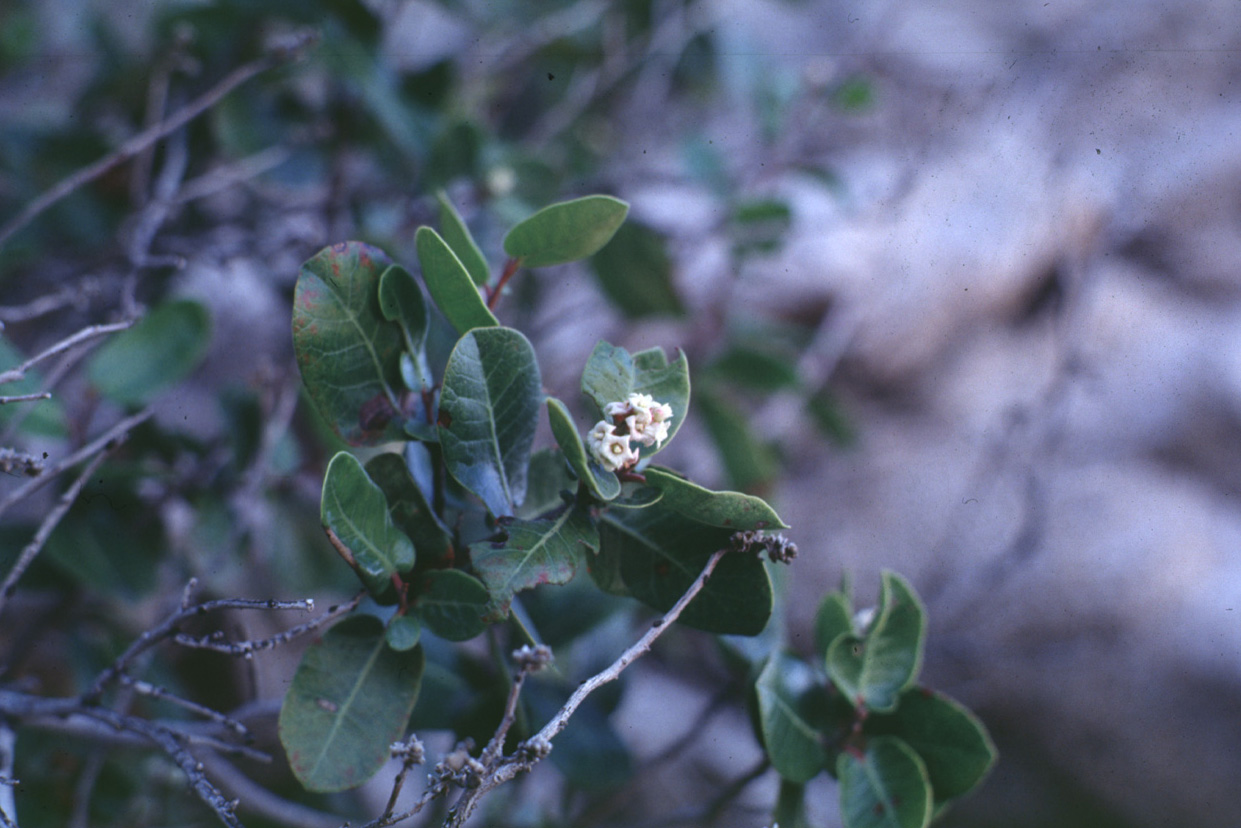Rhus
|
Family: Anacardiaceae |
PLANT: Shrubs or small trees, to 5 m tall, polygamous (bearing unisexual and bisexual flowers on one plant) or dioecious; bark gray, lenticular. LEAVES: simple, trifoliolate or pinnately compound, evergreen or deciduous, coriaceous or thin, entire, lobed or toothed. INFLORESCENCE: terminal and/or axillary, bracteate, dense to open spikes, racemes, panicles, or thyrses. FLOWERS: sessile, regular; sepals glabrous or pubescent, green or pink; petals cream or yellow, glabrous or pubescent; style three-lobed. FRUITS: lenticular-orbicular, reddish to orange, glandular pubescent. NOTES: 150 spp.; worldwide, subtropical and temperate. (Ancient Greek name for sumac). Barkley F. A. 1937. Ann. Mo. Bot. Garden 24: 265-498. REFERENCES: John L. Anderson, 2006, Vascular Plants of Arizona: Anacardiaceae. CANOTIA 3 (2): 13-22. Pet 5, often hairy, especially on the inner surface; stamens 5; ovary 3- carpellate but unilocular, with a short, terminal, 3-lobed style; ovule basal; frs red or reddish, glandular-hairy; innocuous, polygamo-dioecious shrubs or small trees with dense, crowded infls terminal or lateral on last-year's twigs. (Schmaltzia) 100, cosmop. Gleason, Henry A. & Cronquist, Arthur J. 1991. Manual of vascular plants of northeastern United States and adjacent Canada. lxxv + 910 pp. ©The New York Botanical Garden. All rights reserved. Used by permission. |

